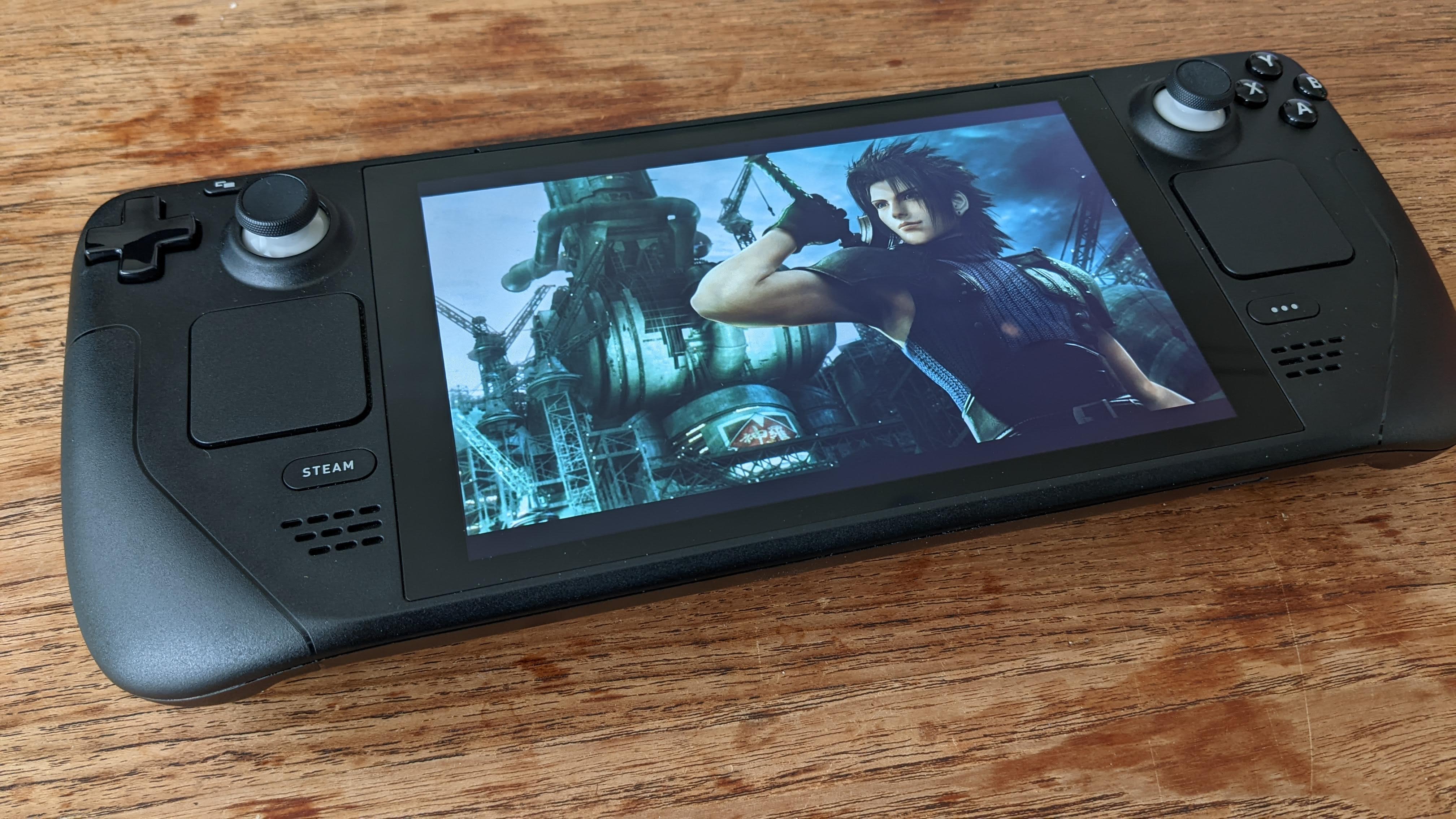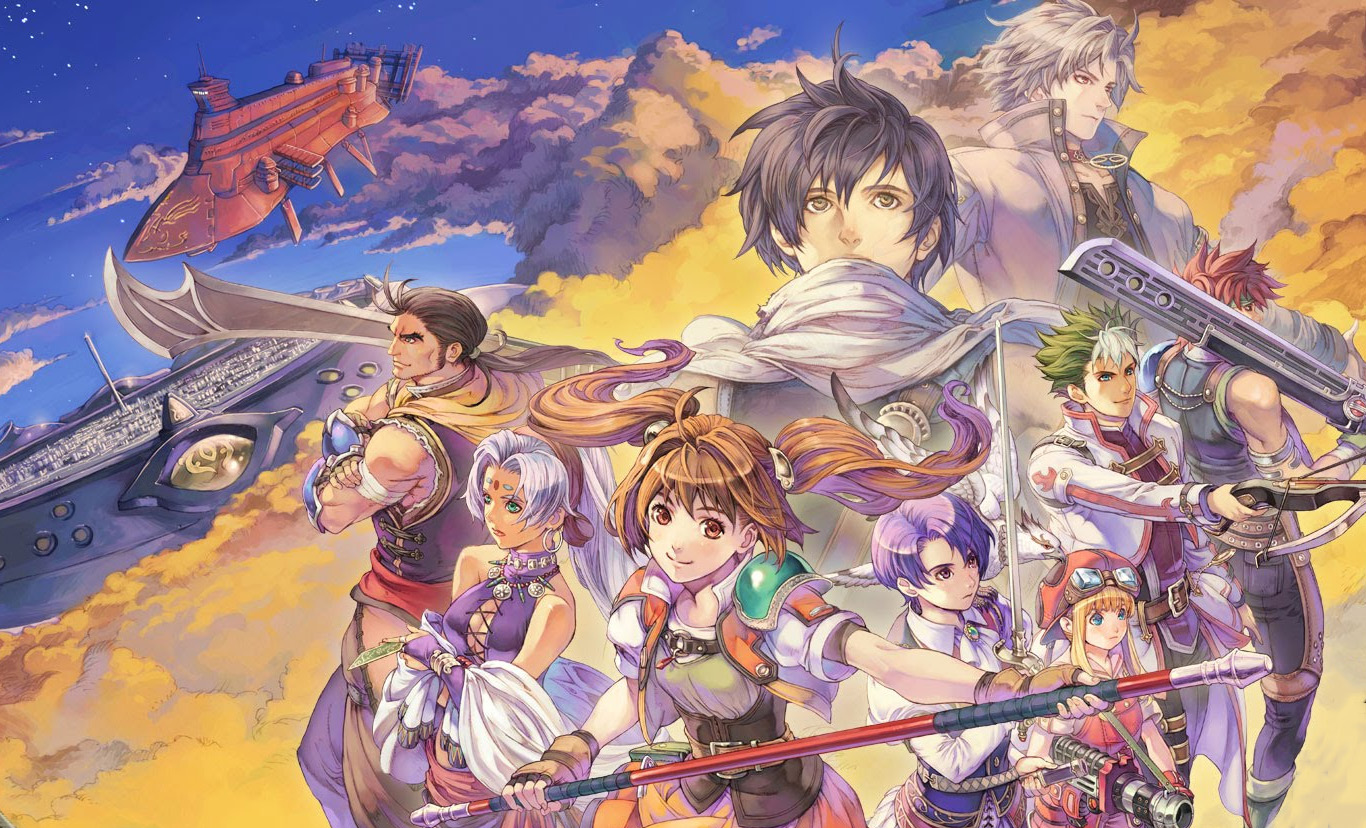The Steam Deck is now the ultimate JRPG handheld
Between emulation and modding, the Steam Deck is the heir to the PlayStation Vita's JRPG crown.

Square Enix has released Final Fantasy 7 on the PlayStation, PC, iPhone, Android, PS4, Xbox One, and Nintendo Switch. But for most of the last decade, if you wanted the ideal Final Fantasy 7 experience, you didn't play any of those ports to newer platforms. You played Final Fantasy 7 on the PlayStation Vita.
FF7's modern ports added enticing features like the ability to fast-forward through random battles, but they also required playing on big HD screens with blurry upscaled backgrounds. Without mods, all of Square's beloved PlayStation RPGs were best played on a CRT TV—or far more conveniently, as downloadable "PSOne classics" on the Vita, Sony's 2012 handheld. The Vita made dozens of amazing (and very, very long) games portable for the first time, and its 5-inch OLED screen was small enough that they still looked great. If you loved JRPGs more than any other games, the Vita was the single best gaming device ever made.
At least it was, until this year. Now it's the Steam Deck.
Rise and grind
PC gaming's relationship with Japan has flourished in the last decade. These days Steam is awash with ports and remasters of classic JRPGs beyond Final Fantasy, from Grandia to Tales of Vesperia to Shin Megami Tensei 3. Before the Steam Deck launched, the Proton software that makes Windows games work on the Deck had issues with the video codecs used in a wide swath of Japanese games. But that issue was fixed, and now the likes of Trails in the Sky and Persona 4 work great on the Deck, even though Valve still has them marked as "Unsupported."

Valve's goal with the Steam Deck is for it to eventually play every game on Steam, though it's a long way from that goal—only about half of Steam's top 100 games are playable on the Deck so far. And even if games do work on the Deck, not everything is an ideal fit (I gave up on squinting at the UI and trying to use a trackpad as a precise mouse pointer within 10 minutes).
JRPGs are an ideal fit, though. They're built for controllers, often turn-based and thus comfortably played at 30 fps, and light on system requirements, meaning hours of battery life. Being able to put the system to sleep and pick it back up later is a godsend for these long-ass games. And grinding out random battles is far more palatable when I can throw a movie on the TV and pay minimal attention to the handheld in my lap. I really wish I'd had the Steam Deck when I put 93 hours into Dragon Quest 11.
On the strength of the Steam library alone, the Steam Deck would be a great device for JRPG lovers: Nihon Falcom, Bandai Namco and of course Square Enix all release games there. But like the Vita, the Steam Deck's real ace card is its versatility, and how many games it can play that weren't expressly designed for it.
Keep up to date with the most important stories and the best deals, as picked by the PC Gamer team.

The PlayStation Vita was the do-it-all gaming handheld of 2012. In the same way Valve packed the Steam Deck with features and control options for any conceivable game, Sony gave the Vita a pair of analogue sticks, cameras, Bluetooth, motion controls, a touchscreen and touchpad on the back, inputs for every conceivable situation. Vita owners could not only download loads of classic PlayStation games, they could also stream games from the PS4 to the Vita with Remote Play, making new, high-end console games portable too. The Vita was even backwards compatible with PSP games, further enriching its catalog.
Sony infamously referred to the Vita as a "legacy platform" in 2015, only three years after its release, and it seemed like the Vita spent most of its lifetime slowly dying (relatable). It was more or less abandoned by Sony, but indies and niche Japanese games kept supporting it for years, with Vita RPGs still being released in Japan as recently as 2020. The Vita also had an active hacking and emulation scene, though it wasn't powerful enough to emulate many systems past the Super Nintendo without some issues.
Still, the Vita was such a versatile device for its time, it was the kind of system that inspired people to see what they could play on it. The hardware was as much a draw as the games themselves.
PCPortable
Part of me wishes the Steam Deck was as svelte as the Vita: I'd love to be able to slip it into my pocket instead of carting it around in a chunky carrying case in my backpack. But the Deck has many other strengths in addition to being more powerful: cloud saves, Steam's controller configurator, and community tools like EmuDeck that come from it being an open platform. As Vitas around the world gradually wear out and Sony eventually stops selling its old games, I hope Vita fans look to the Steam Deck as a replacement.
Where the Vita was the best way to play PS1 games for many years, those games can now be emulated beautifully on the Deck with DuckStation, running at higher resolutions than they did originally. It can also handle PS2 games, and emulator hacks open the door to making older games run flawlessly in widescreen and using HD texture replacement mods.
Meanwhile, the definitive versions of JRPGs like Final Fantasy 7 and Final Fantasy 9 are now unquestionably the PC's, thanks to AI upscale mods like Satsuki Yatoshi's and Moguri. I installed the Moguri mod on the Steam Deck, and Final Fantasy 9 looks fantastic; I also loaded up the Final Fantasy Pixel Remasters and modded their fonts, something you won't be able to do when they're inevitably released on the Nintendo Switch. Can you imagine being stuck with this? The recent remastered port of Chrono Cross has mixed reviews on Steam thanks to bizarre performance issues and poor upscaling, but modders are already hard at work improving it.
Through Retroarch it's even possible to install emulators for Japanese PCs, like the NEC PC-88 and PC-98, opening the door to exploring the origins of Japanese RPGs on the same handheld that houses everything from a new version of Final Fantasy 1 to its bizarro remake Stranger of Paradise. Ironically, some of the only JRPGs the Steam Deck can't currently play are the ones released exclusively for the Vita. Vita emulation is still in its infancy, with only about 10% of games playable so far. But at least that gives us something to look forward to.

Wes has been covering games and hardware for more than 10 years, first at tech sites like The Wirecutter and Tested before joining the PC Gamer team in 2014. Wes plays a little bit of everything, but he'll always jump at the chance to cover emulation and Japanese games.
When he's not obsessively optimizing and re-optimizing a tangle of conveyor belts in Satisfactory (it's really becoming a problem), he's probably playing a 20-year-old Final Fantasy or some opaque ASCII roguelike. With a focus on writing and editing features, he seeks out personal stories and in-depth histories from the corners of PC gaming and its niche communities. 50% pizza by volume (deep dish, to be specific).


